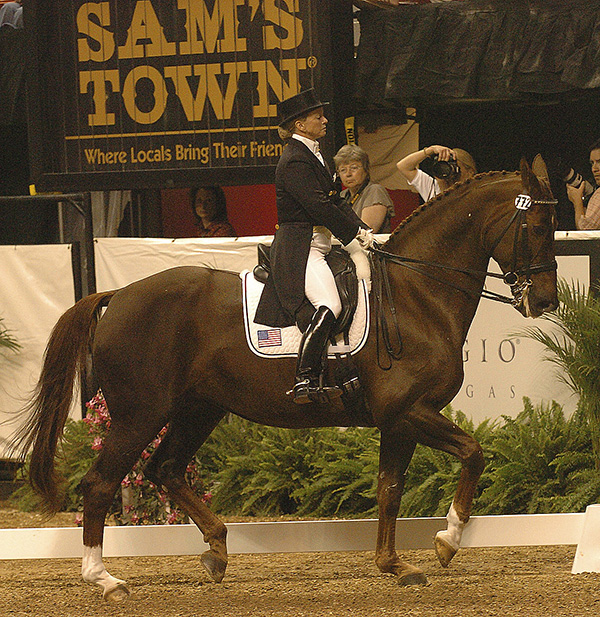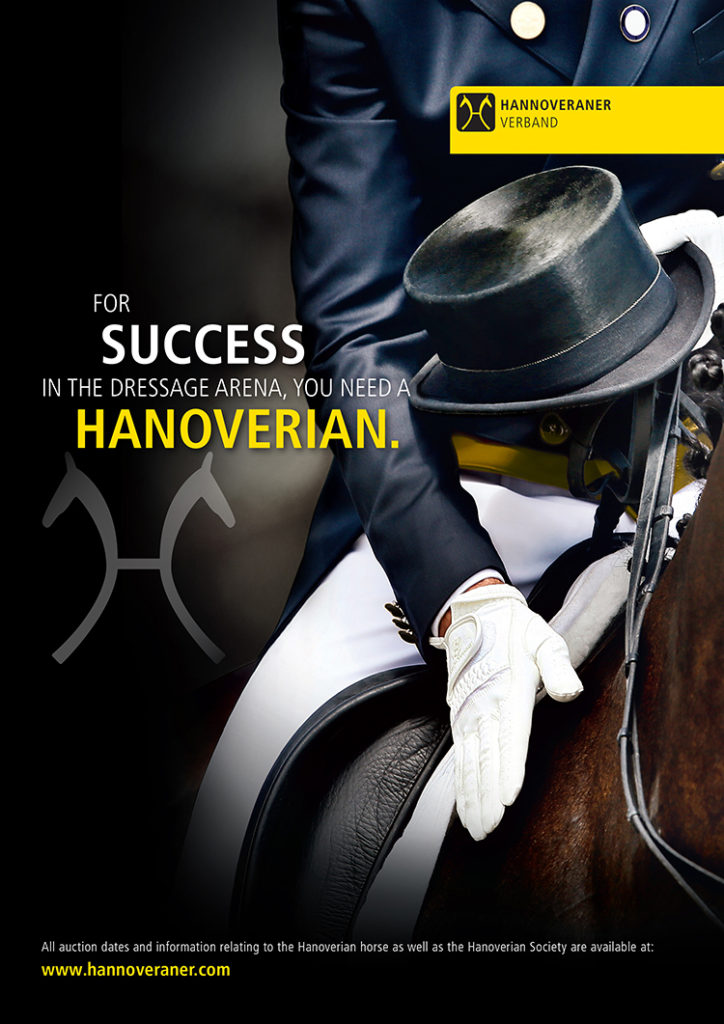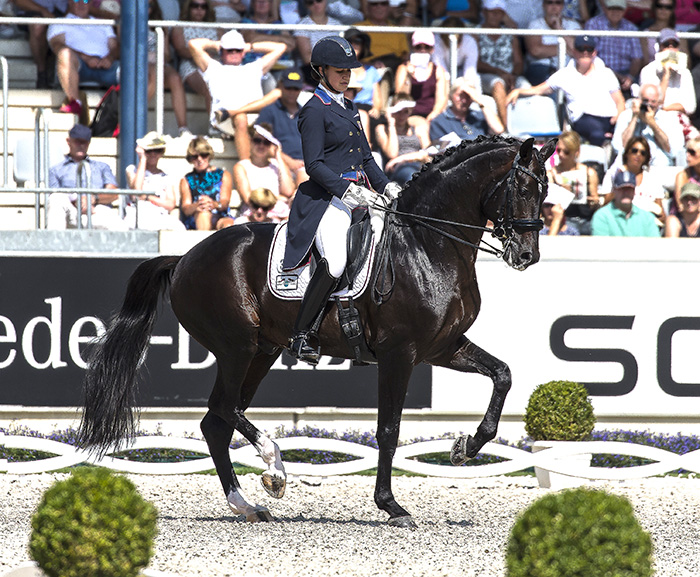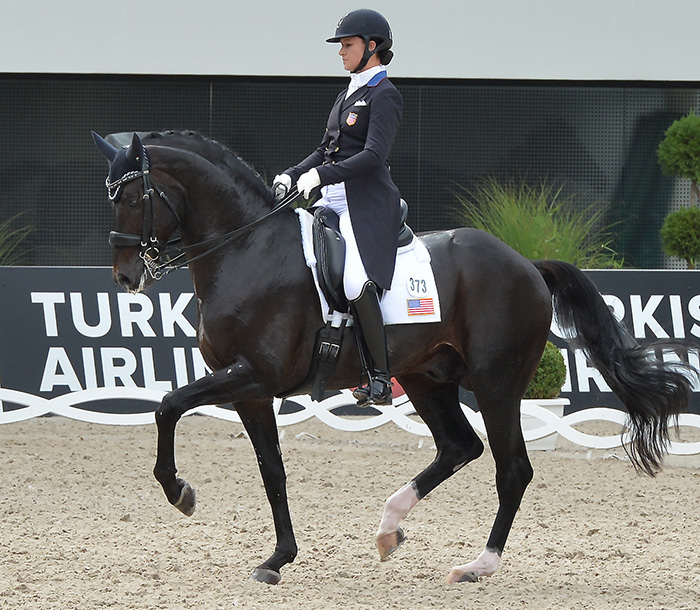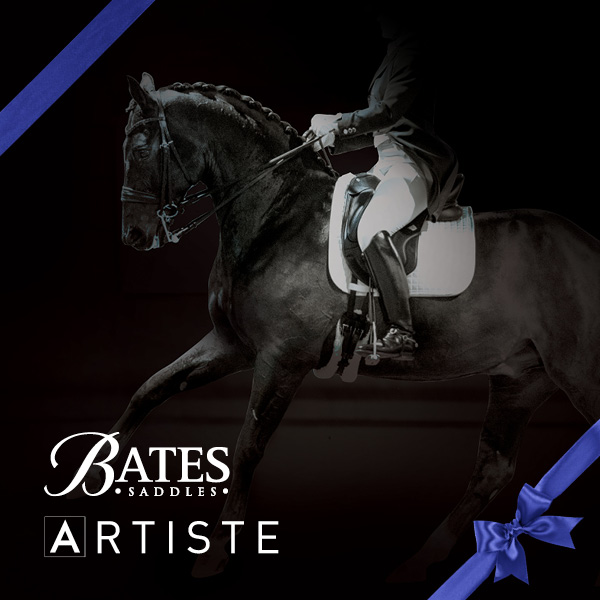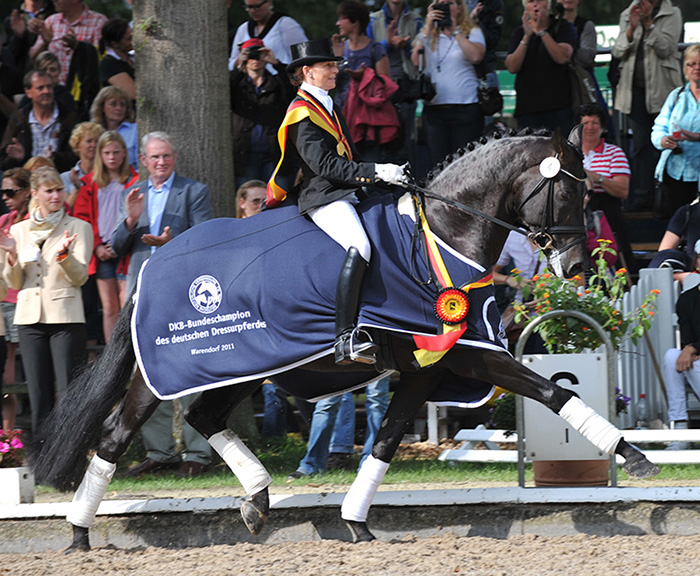
An interview with Christopher Hector
Adrienne Lyle looks to me like the next big thing in American dressage. She is a beautiful rider, but more to the point, she has not one but two Grand Prix horses. Her front-liner is Salvino, by Sandro Hit out of a Donnerhall mare, while not far behind is the grey, Harmony’s Duval (Rousseau / Riverman) another star emerging on the dressage horizon. Christopher Hector caught up with Adrienne at Aachen for this interview…
I find it really interesting that this current crop of American dressage riders is so elegant, tactful and correct, yet you Americans are very similar to us in Australia – you are not the Germans with 150 years of dressage tradition – yet while many of our riders still go around with basic rider faults, this group of Americans are so correct, what do you put this down to?
“First of all, that’s very flattering, thank you, I think there are several factors. One our riders as a collective have been looking for a stamp to put on American dressage. There’s a German style and a Dutch style, and I think we have been very picky and correct and classical in our riding. I think a huge part of this is due to Debbie MacDonald who coaches a lot. She did the Developing Program for a number of years and coaches our top riders now, and she is very picky on that with her. Her vision for the training has trickled down throughout our country.”
“We’ve also had recently the involvement of a human sports medicine program. There’s a physio guy who works with our riders, he’ll come to the riders’ farms and look for asymmetry. Everything is drawn to a higher level of being mindful of your own position, and your own riding.”
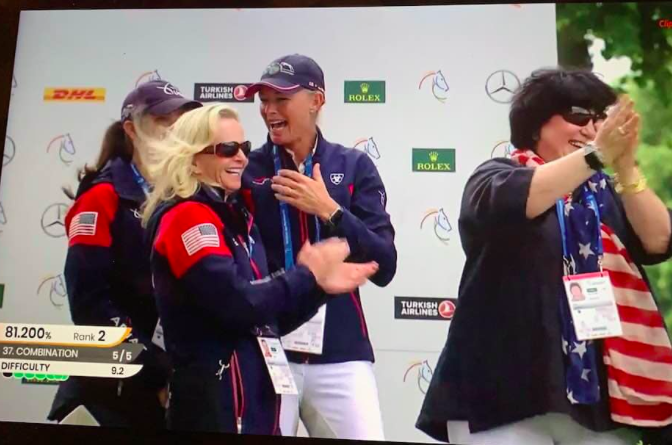
The coach – Debbie McDonald, and the sponsor – Betsy Juliano – they like Adrienne’s test
story continues below advertisement
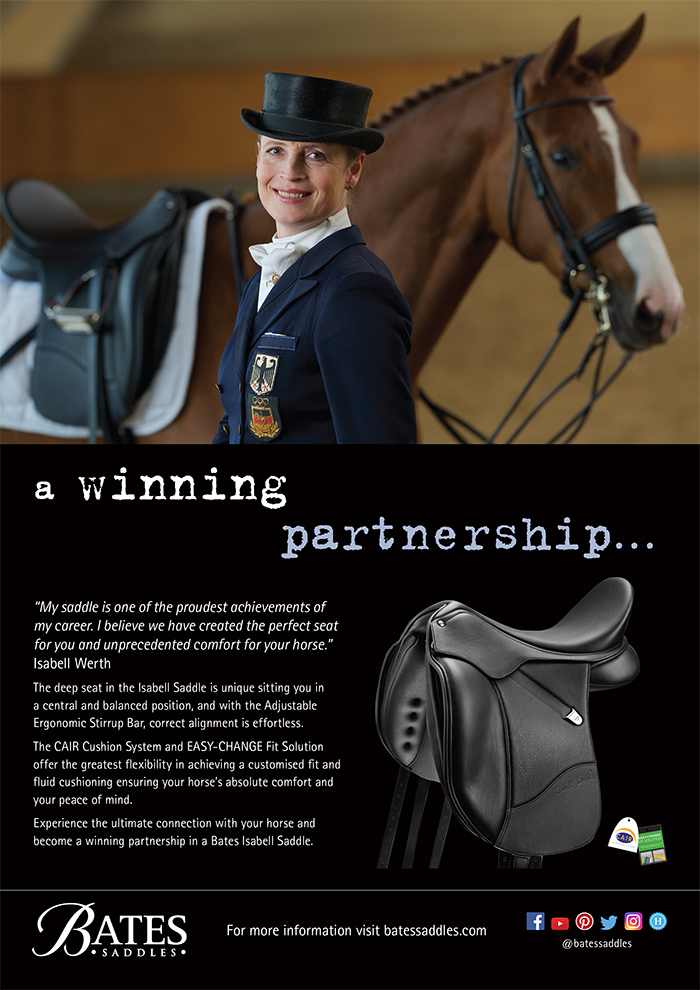
If you had to sum up the essence of Debbie’s philosophy, what would you highlight?
“Being picky on yourself as a rider, to make sure you are communicating clearly and that involves firstly, being in complete control of your position. If you are riding asymmetrically or over-aiding, then you are not being as clear as you can. Her whole philosophy is to have the horse really understanding, to make the horse a willing partner, so you are not having to muscle it around. That’s her big goal.”
I’ve watched Debbie train on a couple of occasions, and it is an exhilarating experience because she is so positive, but she is a pretty directive trainer… she’s not like Harry Boldt who would sit in the corner and once every ten minutes go Ja, or Nein… Debbie is there in your ear!
“For sure, and when you have been working with her for a while, there is a lot of back and forth, not in an arguing kind of way, but a – I’m feeling this, what does it look like. She’s very involved with the rider, she wants their feedback, she wants every rider to understand what they are doing, not just tell them more right rein. More right rein, but here’s why, this is what your horse is doing mechanically, and these are the mechanics to fix it. The riders need to be aware of why everything is being done, not just what they should being doing.”
She really must be one of the most influential trainers in the history of dressage – I think all your leading candidates for a place in the American team for Tokyo are Debbie graduates…
“Several of them are…”
And you started with Debbie when you were just a slip of a girl…
“Eighteen years old!”
Debbie and the great Brentina…
And what drew you there?
“I had always admired her riding style, but it’s really a wonderful story of coincidence. My family is from Sun Valley. Idaho, we were big ski people so we used to go there in the winter. I always wanted a lesson with Debbie, so I hauled my horse down and started knocking on her door. She agreed to teach me a lesson and it went from there.”
But she does seem to have been one of those people who are generous with their time and their intelligence and with their emotional warmth, whereas there are quite a few dressage riders who will teach to a certain limit but they want to maintain their superiority…
“One of the things I have always liked about her is her ability to make the student feel like the star. She never makes it about herself, she really gives the students confidence to believe that they are capable themselves, and I think that is a big thing mentally for the riders, they go out their feeling that they are not reliant on their trainer but they can do this themselves. She is very generous with her time, they took the time on me when I was nothing but a teenager, and she decided to invest the time in me.”
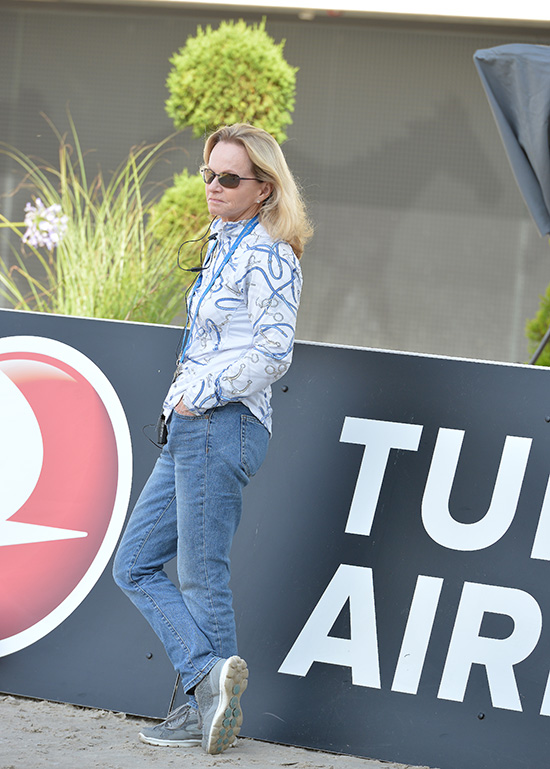
You went on as a working pupil?
“They offered me a working pupil position, and I started riding some of the hunters, because her husband has a hunter / jumper business. I’d kind of catch ride when the trainer didn’t show up. From there it progressed, at the time Debbie was thinking of retiring from competition and that opened up a wonderful opportunity for me…”
Do you think the jumping riding actually helped your position?
“I think the more you get to do all sorts of riding helps you for sure. I grew up three day eventing too, it helps just getting a natural feeling and balance.”
story continues below advertisement
So Debbie gave you the opportunity to ride her horses in competition?
“The Thomas family – Perry Thomas was her sponsor – and he too was greatly responsible for my opportunity, because he didn’t have to have me ride his horses after she retired, he could have gone out and got someone who was already experienced and had shown internationally, to ride his horses, but he was prepared to take a chance on someone who hadn’t ridden at that level before. I think that mentality is pretty neat, and Debbie has found a lot of people who are willing to take a chance on up-and-coming riders who she thinks have talent, and invest time in them – not only looking at who is at the top, and going after them, but who is maybe not at the top, but has potential, but just doesn’t have the resources.”
It’s a tough world for a young dressage rider unless they have a family…
“With millions of dollars!”
I suppose you didn’t come from one of them?
“Definitely not. I’d always wanted to ride at this level, but I was also very realistic about the type of people who usually get the opportunities, and the horses at that level, so every little bit I got was a blessing, I never felt like I was entitled or expecting any of it. I always figured I was from a background where none of that was on the cards, so I took every opportunity I could, when I got it.”
So what was the circuit breaker – an owner like Betsy Juliano?
“Absolutely. Just having an owner was something I had never experienced before until I met the Thomas family. I had always owned my own horses. Perry was a huge supporter. I rode Felix at Grand Prix, who Debbie had previously shown at Grand Prix. Then I brought Wizard up through the U-25 and the Grand Prix. Perry passed away, and then Betsy Juliano stepped in with a similar vision to Perry in that she likes to watch the horses develop, she likes to buy younger horses, not other rider’s Grand Prix horses. That was something Perry always did, he went to the Verden auction and bought three and four year olds. That’s what I have always done, started with the young ones, that’s what I enjoy doing. I felt lucky to find another sponsor who enjoyed the training process, who was willing to stick with it through the training years, someone who didn’t expect you to get the horse and go into the ring the next day.”
Salvino at Aachen
Your front-liner, Salvino, is a Sandro Hit and they are not always the easiest pony in the stable to establish a relationship with…
Adrienne is giggling: “It took a while. It was a whole year before we put him in the ring and everyone was kind of like, come on, what are you doing, he was owned by a syndicate at the time, and they were patient, they let me go with my gut when I said I need a year to get to know him and re-calibrate things and get us on the same page – it takes a while for sure.”
While the Sandro Hits have got a lot of strengths, it is generally not behind, the stallion himself was never the most engaged of horses, when you think of Bentina and the power behind, is that something you have to think about when you are training a Sandro Hit, developing that power behind?
“Definitely. Salvino has developed a really lovely piaffe / passage tour, which I know not all the Sandro Hits can, but it took a tremendous amount of strength, it took us several years of not only learning the mechanics of doing it, but gaining the strength to do it. Fitness is something I have found to be incredibly important for him – we cross train, we do hills, lots of stuff like that because without that strength he would definitely struggle. It’s not something that is naturally there, you have to be extra mindful to create the strength so they can get the engagement behind.”
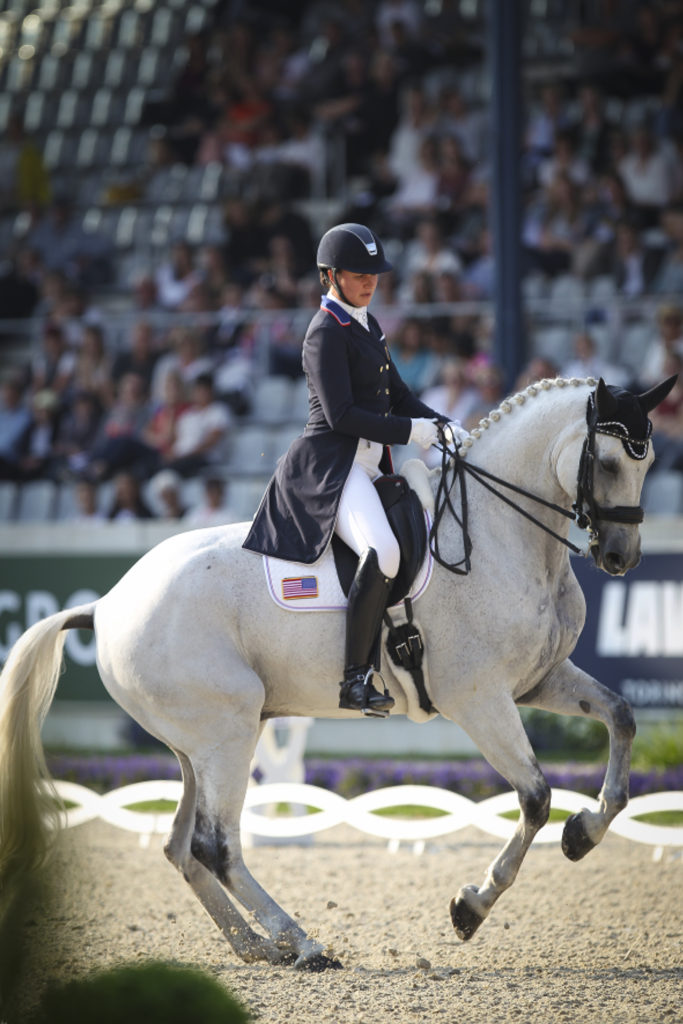
And she’s got a second one – Adrienne and Harmony’s Duval
(photo Astrid Appels eurodressage)
You looked back to your eventer days for inspiration?
“Actually yes. I’ve been working recently with the HiLowFit, which is a heart rate monitor and is really a fantastic tool. I have it on Salvino when I ride. Coming from the eventing world that’s really something that I thought was lacking in dressage. We do repetitive movements day after day after day, and no one actually thinks about the fitness of their horse, the things they can do to make his body physically able to do what we are asking. Not just teaching the same tricks, but making his body function as an athlete.”
story continues below advertisement
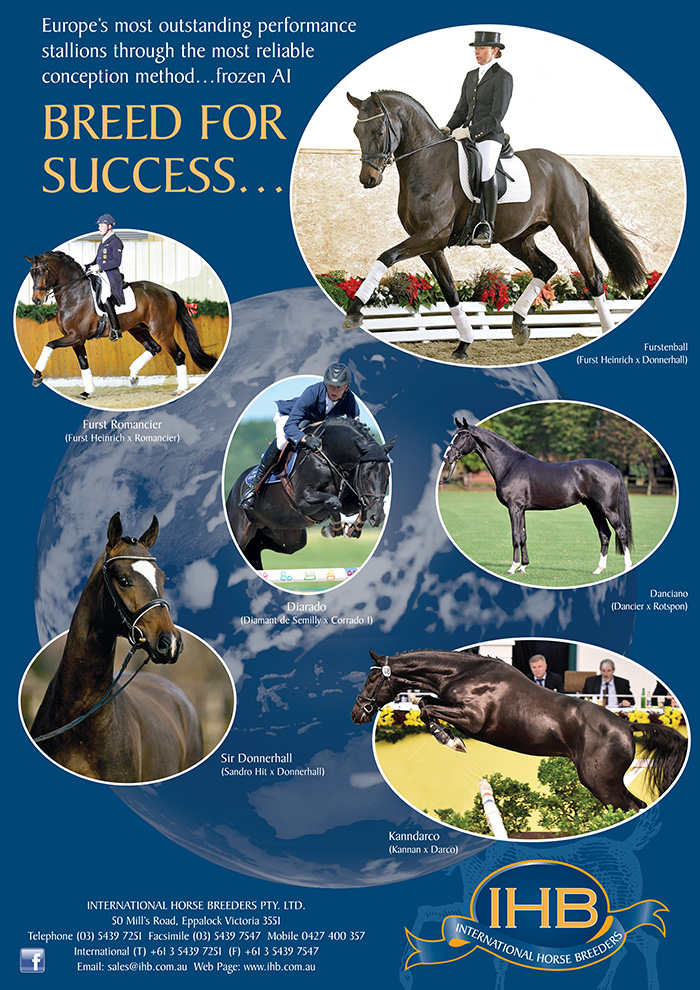
Because there’s so many fat dressage horses…
“Yeah. They are muscle bound but they don’t have any other fitness behind them.”
And there’s a few riders who look as if they would benefit from a fitness program…
“Just as important for the riders…”
You look pretty fit and trim…
“I work on it. I do high intensity interval training, two or three days a week, also with a heart rate monitor. I try to mix it up, in the Summer, I do a lot of hiking because we are in Colorado where there are lots of mountains. When I’m in Florida I try to put in a day of Pilates as well, to stretch out your muscles when you’ve been doing the weights the rest of the week.”
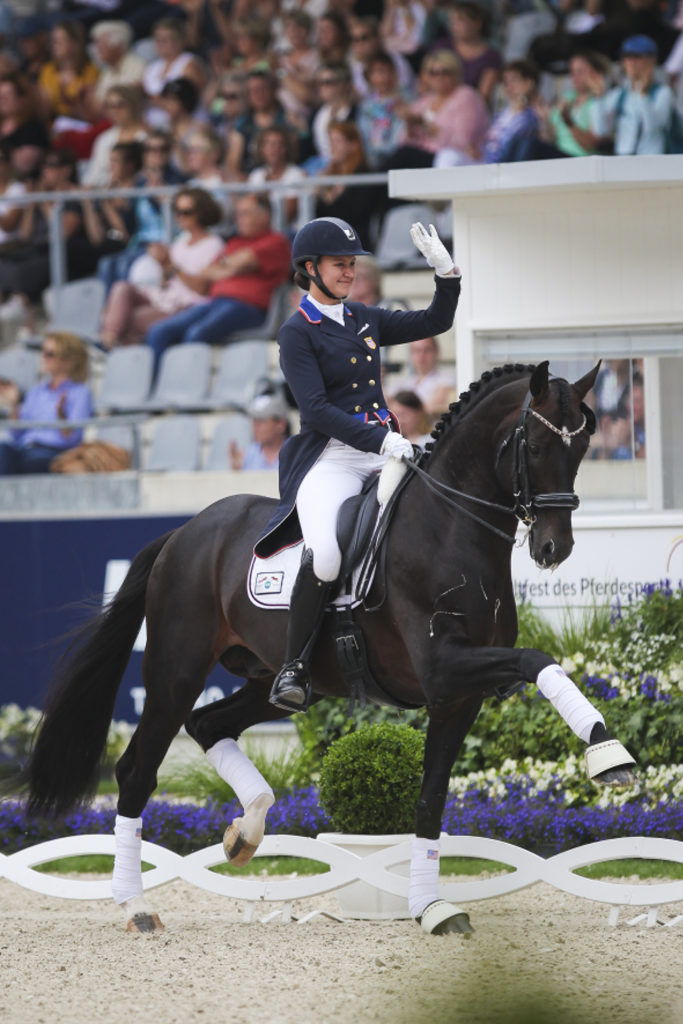
(photo Astrid Appels eurodressage)
I was watching your freestyle at the World Cup final in Gothenberg, and it looked so beautiful, it all seemed to fit together so well, how did it feel on the other side of the fence?
“Actually I was laughing, I think it was the first time in my life that I have actually looked up during a test, during the freestyle, it was like this is nice!” Adrienne is laughing as she recalls the moment. “Normally you are so focused on everything, and my previous horse, Wizard, was definitely not an indoor horse, he was so hot and could have a bit of a melt down in an indoor environment. Salvino is the first horse I’ve had that seems to thrive on the indoor environment, and I remember very vividly actually looking up at the crowd – oh this feels nice!”
story continues below advertisement
And it just takes the judges a little while realise how good you are…
“Yeah and I think you have to get consistent enough that they start to believe it, then be able to put that test in time and time again. That’s what’s important for a team horse.”
Does it still give you the buzz, dressage?
“Absolutely. I’m very lucky that I get to do what I love every day. The competing part is fabulous but as I said, what I’ve always been fascinated with, is the training, I get the same buzz with the three-year-old when they learn something for the first time, that’s almost as exciting as when you get the Grand Prix horse up there…”
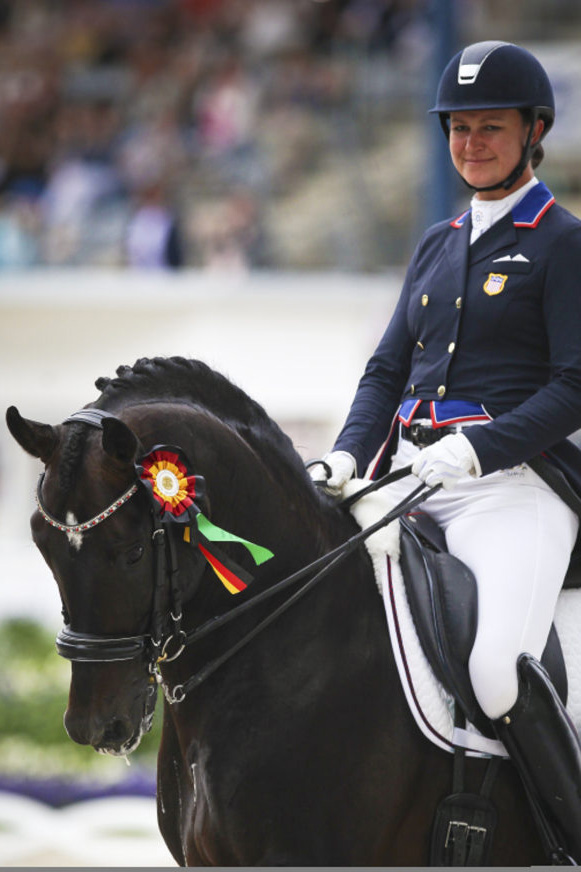
(photo Astrid Appels eurodressage)
Interested in breeding to Fürstenball in Australia? You can – go to www.ihb.com.au

